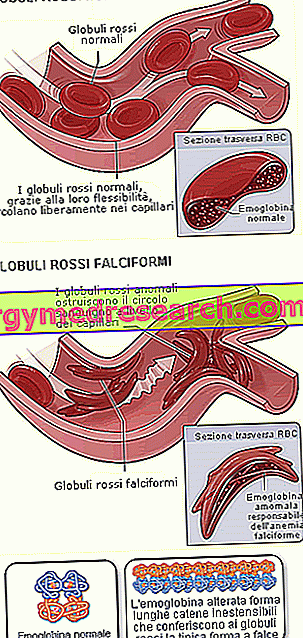What's this
What is marzolino cheese?
Marzolino is a very ancient Tuscan cheese made from sheep's milk (sheep's milk), raw or pasteurized - possibly corrected with little cow's milk.

It is a type of Tuscan pecorino with specific characteristics of production, labeling, organoleptic and taste.
Tuscan pecorino, once known as cacio marzolino, enjoys the recognition of Protected Designation of Origin (DOP) - it is also produced in a couple of Umbrian and eleven Lazio municipalities. We must therefore be careful not to confuse products of the same category but substantially different. Marzolino cheese is always young and with a characteristic shape. More generally, some Tuscan pecorino cheeses can be seasoned and cylindrical in shape.
The maturing of the marzolino cheese can vary from three to six months but, generally, the cheese has a rather tender consistency. The etymology of the name comes from the month in which, in the past, we proceeded with cheese making; today, production lasts all year.
Marzolino cheese is a product that belongs to the II fundamental group of foods. Contains high biological value proteins and fairly specific nutrients - some B vitamins, mineral calcium, etc .; there is no lack of non-specific micro and macro nutrients even in significant quantities - vitamin E and provitamin A, phosphorus, etc. On the other hand, marzolino cheese is also a significant source of cholesterol, saturated fat and sodium. It can be inserted, in portions and with adequate frequency of consumption, in the diet of all healthy subjects; the same cannot be said in the context of clinical nutrition - hypertension, hypercholesterolemia, lactose intolerance, etc. Later we will go into more detail.
Marzolino cheese has a typical loaf shape. The rind is light or reddish. The paste is light, tender and slightly grainy. Taste and aroma are delicate, fragrant and characteristic. It becomes slightly spicy with maturation. The production label is printed on one of the two faces.
Marzolino is a table cheese, although its particular solubility makes it suitable for fusion in various recipes, and goes well with white, rosé or young red wines.
Nutritional Properties
Nutritional properties of marzolino cheese
Marzolino cheese, as a dairy product, belongs to the II fundamental group of foods.
It has a very significant energy and lipid intake, which slightly increase as the maturation period continues. Calories are mainly supplied by fatty acids, followed by proteins and very few carbohydrates - mainly in low-seasoned forms. The lipid chains are mostly saturated, the peptides with high biological value - that is they supply all the essential amino acids in the right proportions and quantities with respect to the human protein model - and the very few simple carbohydrates - lactose, disaccharide.
Marzolino cheese does not provide dietary fiber; on the contrary, it contains cholesterol. As the seasoning increases it tends to dry slightly, the lactose is degraded by the bacterial microflora, increasing the concentration of lactic acid and increasing - relatively - the concentration of histamine. The quantity of purines, as for the other foods of the same food group, is rather limited. Does not provide gluten.
The vitamin profile of the marzolino cheese is characterized by its abundance in riboflavin (vit B2), retinol and / or equivalent (vitamin A and / or RAE). Many other water-soluble group B factors such as thiamine (vit B1) and niacin (vit PP) are fairly concentrated. With regards to minerals, on the other hand, the cheese shows significant concentrations of calcium, phosphorus and sodium.
Diet
March cheese in the diet
Marzolino cheese, being a very caloric and high-fat food, does not lend itself to the weight loss diet against overweight - which should be low-calorie and normolipidic. It should however be remembered that, as regards the concentration of fat and energy density, in the overview of Italian cheeses, this product is considered a good compromise.
The prevalence of saturates on the total fatty acid profile and the abundance of cholesterol make the marzolino cheese unsuitable for hypercholesterolemia. If the dysmetabolism is compensated, it is possible to insert the cheese occasionally in the diet and in very small quantities.
Containing high biological value proteins, marzolino cheese can be considered an excellent source of essential amino acids. It is recommended in case of increased need for these nutrients; they are indicative examples: general, specific malnutrition, chronic malabsorption and increased needs - for example during pregnancy or by practicing extraordinarily intense and prolonged sports. The use of cheese as a nutritional source of high biological value proteins / essential amino acids is however limited by its less desirable properties which, to guarantee the balance of the diet, require the use of small portions and a modest frequency of consumption.
Lactose, in itself scarce due to lactic fermentation, can however cause discomfort to the most sensitive intolerant; on the other hand, statistically speaking, the adverse reactions to marzolino cheese - which manifest themselves mainly with gastrointestinal symptoms of diarrhea, meteorism, abdominal tension, flatulence and cramps; rarely nausea and vomiting - may be considered infrequent. Being able to contain traces or modest quantities of histamine, especially in the forms of six months, it must be considered inappropriate in case of specific hypersensitive intolerance. Free of gluten and poor purine, it is instead pertinent to the diet against celiac disease and hyperuricemia.
Given the wide range of water-soluble vitamins of group B, which mainly perform the task of cellular coenzymes, marzolino cheese can be considered a useful food to support the metabolic processes of various tissues. The fat-soluble vitamin A and / or equivalents (RAE) abound in the marzolino cheese, necessary to maintain the visual function, reproductive capacity, cellular differentiation, antioxidant defense, etc., intact.
Considering the high percentage of sodium, the marzolino cheese should be avoided or strongly limited in the preventive and / or therapeutic diet sodium hypertension. However, this cheese is much less salty than the mature pecorino cheeses and therefore less suitable for the DASH (Dietary Approaches to Stop Hypertension) diet.
The richness of calcium and phosphorus is a very useful feature to guarantee the skeletal mineralization requirement - to form hydroxyapatite - very delicate during fetal development, childhood growth and preservation in old age - due to the tendency to osteoporosis . Notes : it is good to remember that for bone health it is also necessary to guarantee a correct nutritional intake of vitamin D and / or adequate sun exposure in the hot season.
Pregnant women can only consume the marzolino cheese made from pasteurized milk, while they should avoid raw milk; eventually, the latter can be made suitable for cooking.
Marzolino cheese is not allowed in the vegan diet. The traditional one should not contain animal rennet, but vegetable (cagliofiore) based on thistle - or wild artichoke; if so obtained, the marzolino cheese is suitable for a vegetarian diet. Using calf rennet instead, must be excluded. It has no contraindications for the Muslim and Jewish religions; Hindus can consume the marzolino obtained with cagliofiore. The opinions of observant Buddhists are conflicting in this regard.
The frequency of consumption of marzolino cheese - as a dish - is less than or equal to 1-2 times a week, while the average portion corresponds to about 80 g.
Kitchen
Marzolino cheese in the kitchen
Marzolino cheese is consumed mainly as an appetizer, a dish or a dessert. It is very soluble and melts easily, evenly, which is why it is suitable for enriching various types of recipes.
Some recipes that contain this cheese are: fritters, pies and timbales, quiches and savory pies of various kinds - also with mushrooms, dried fruit, cold cuts etc. - cold salads, fondues to dress the first courses or slices of toasted bread. It is also excellent when melted on red meat.
It can be combined with wines of various types, white, rosé or red, as long as they are young; two typical examples are Montalcino and Montepulciano - of Tuscany, of course.
Description
Description of marzolino cheese
The marzolino cheese has a typical loaf shape, slightly oval, round or cylindrical. The heel is 9-13 cm in height; the length is 15-21 cm. The weight is between 500 g and 1.5 kg. It has a thin, whitish-colored rind that tends to reddish, increasing aging - during ripening it is tinted with tomato.
The paste is in shades ranging from white to straw yellow. It has a compact and elastic structure, sometimes slightly grainy, never decidedly friable; it can show a thin, irregular and not equally distributed bird's eye view. It tends to stick to the palate. The taste and aroma of marzolino cheese are delicate and fragrant, better in cheese made from raw milk; the taste is initially sweetish then acidulous and slightly salty; it tends to be picky in the forms of six months. There are variants with truffles or chilli peppers.
Production
Elements of marzolino cheese production
The production of marzolino cheese begins with the milking of sheep's milk and, possibly, with a small amount of cow's milk. This can be left raw or pasteurized. We mainly use two milkings: the first evening, to which a skimming by surfacing is applied, the second morning, to which the entire lipid fraction is preserved. Raw milk gives rise to a more aromatic and valuable cheese; it also preserves the natural bacterial flora necessary for curd coagulation.
The milk is then collected and heated to 30-32 ° C, allowing any physiological flora - in marzolino cheese made from raw milk - to replicate by metabolizing lactose with the production of lactic acid. The curd itself is formed with the addition of rennet - thistle vegetable or calf animal, over a period of about 20-25 minutes.
The curd is then broken, crumbled and left to rest. Therefore it is separated from the whey by collection and it is drained in perforated containers. The bleed is reinforced by pressing.
Dry and compact, the forms are dry salted and left to dry briefly wrapped in special bags - cloths - for about 2 days, during which they turn every 8 hours.
The first maturation takes place in rooms with a controlled atmosphere - like cellars - and on wooden boards or bags; during this time the forms are continuously turned and washed.
Finally the maturation takes place, from 3 to 6 months long; some color the crust by painting it with tomato. The labeling follows on one of the two sides and is put on the market.
History
Marzolino cheese in history
It seems that they were no less than the Etruscans, perhaps 700 years before the birth of Christ, to begin the production of sheep's cheese on the territory of Etruria - Tuscany, Umbria, northern Lazio, south-eastern Liguria, Lombardy.
The first written traces, generally referring to Tuscan pecorino rather than to marzolino cheese, were found in "Naturalis historia", by Pliny the Elder (23-79 AD).
Since the Renaissance, the marzolino cheese was already widespread in Florence and throughout the Sienese territory, considered worthy for the palate of nobles and ecclesiastics. According to a local rumor, Caterina de 'Medici - very fond of cheese - in the 16th century brought marzolino to France on the occasion of her marriage to King Henry II.
Francesco Molinelli, in a memorial on Tuscan cheese dating from the late 18th century, also spoke of Tuscan pecorino.



